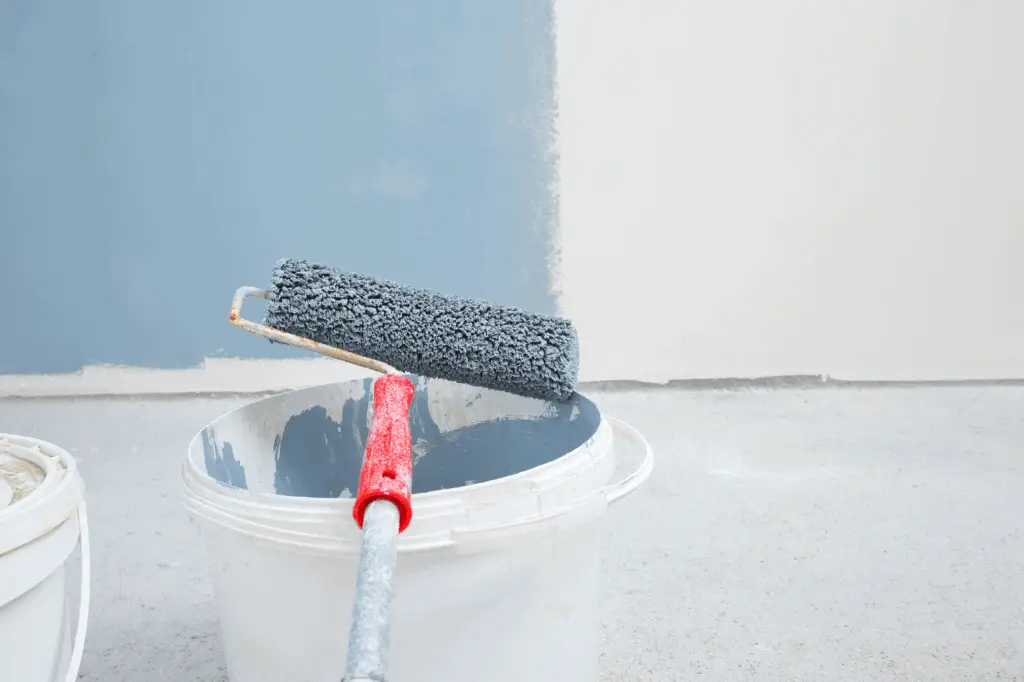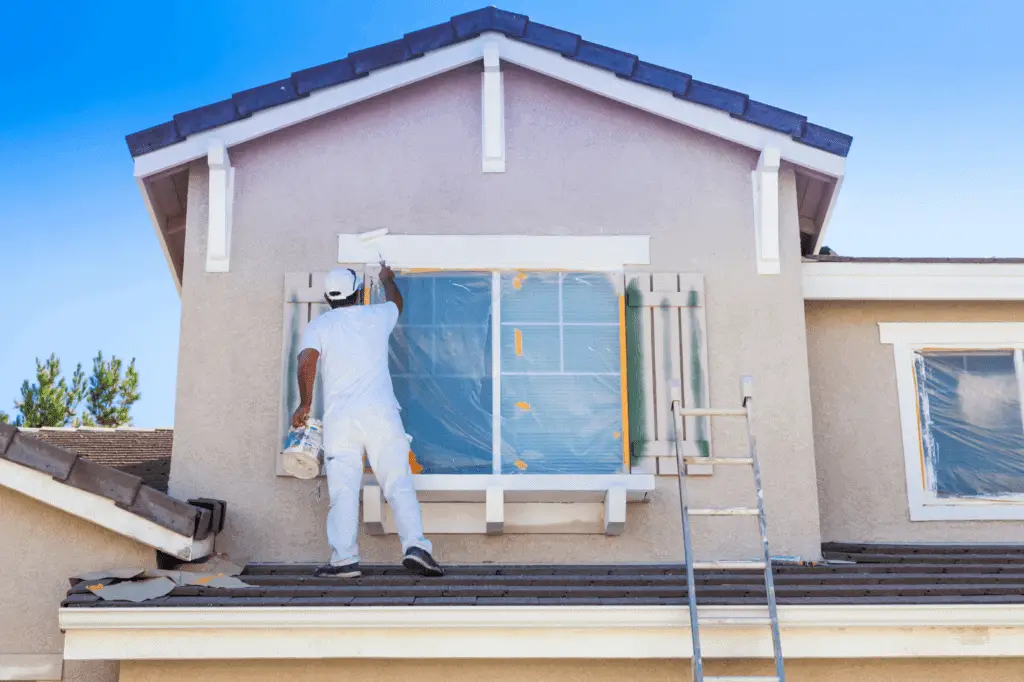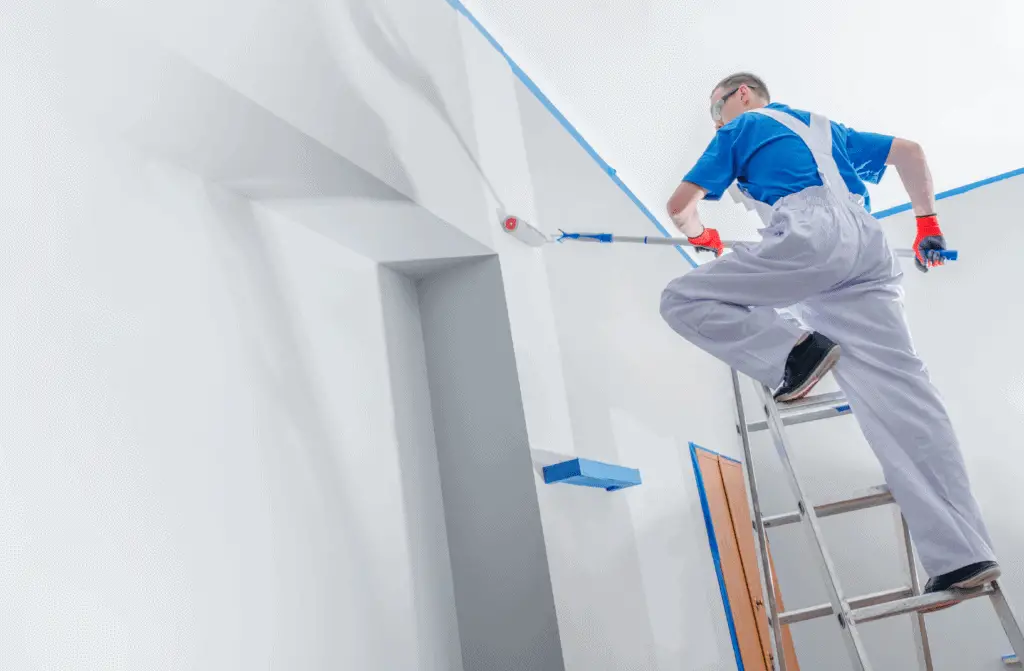Every one of us needs a perfect painting job. But there are so many options of paints out there. You might have heard, that acrylic house paints have the highest quality. However, it has both pros and cons.
The pros of acrylic house paints are;
- Resistant to waterborne stains
- Has lightfast pigments
- Dries quickly
- Offer great adhesion
- Flexible
- Has very low VOC (volatile organic compounds)
The cons of acrylic house paints are;
- Colors may darken as the paint dries
- Flexibility changes with environmental conditions
- Relatively less smooth application
- Problems with painting over previous oil-based finishes
It is also important to know a little chemistry behind acrylic paints to better understand their properties and the pros and cons. This way you will be able to choose the perfect paint, that can achieve what you expect.
What is acrylic house paint?

All paints are made from 4 components. They include a pigment to give color, a binder to hold the pigments together, liquid to facilitate flow (oil or water), and other additives to enhance application and properties. According to different binders and liquids used, there are two types of paints. They are latex paint and oil-based paints.
Latex paint use polymers, essentially plastic to bind the color pigments together and form a paint film. Oil-based paints use oils and/or alkyds (oil-modified polyester) as the binder.
Acrylic house paint is latex paint. It uses acrylic polymers as the binder and water as the liquid. They are extremely resistant to moisture and protect from sunlight. So most of the time 100 % acrylic paints are used for exterior surfaces. There is another type of paint in the latex group. They are emulsion paints using polyvinyl acetate (PVA) polymer as the binder. Compared to PVA-based paints, acrylic paints can handle distresses like moisture.
Acrylics provide a good balance between flexibility and durability. Durability refers to properties such as cleanability/washability, stain resistance, etc in the context of interior wall paint.
Helen Dooley, Technical Advisor for Dulux
Pros of acrylic house paint
Following are some pros of acrylic house paint. There are some greater advantages of using acrylic paints over other house paints.
Resistant to waterborne stains: acrylic paints are more resistant to waterborne strains like coffee, juice, and other beverages. Thus they can be used for bathroom and kitchen walls. Also, they can be used on exterior walls. Paints using acrylic resins resist peeling and flaking.
The reason is that acrylic paint films are permeable and breathable. If moisture is trapped inside the paint film, it can be released well, without causing blisters in the paint. But oil/alkyd-based paint films are less permeable and more prone to blistering.
Has lightfast pigments: Most acrylic paints have lightfast pigments, meaning the colors stay vibrant even when exposed to sunlight. But with oil/alkyd-based paints, colors can be yellowed with time.

Dries quickly: acrylic house paints dry quickly (generally within 30 minutes). However, make sure you allow the curing time according to the manufacturer’s directions.
Offer great adhesion: acrylic paints adhere well to any surface when the surface is prepared well with a sealer or undercoat. Use the sealer as per the directions of the manufacturer. Different paints recommend using different sealers.
Flexible: Can tolerate stress on the paint film well. The paint will remain intact when the surface is been stretched or squeezed.
Acrylic paint has flexibility properties. It is required for the breathability of a wall to prevent cracking or flaking of your paint film. This is the reason for using acrylics for exterior paints. However, the emphasis on flexibility becomes more relevant particularly on surfaces prone to expansion and contraction such as wood.
Helen Dooley, Technical Advisor for Dulux
Has very low VOC: acrylic house paint has very low VOC compared to oil/alkyd-based paints. Hence they have less odor. Due to low VOC, they are good for both environment and humans.
Cons of acrylic paint
Following are some cons of acrylic house paint. These are not necessarily disadvantages. These will not affect your acrylic paint job, rather it is always better to know these aspects of acrylic paint.
Colors may darken as the paint dries: Acrylic paints are emulsions. Meaning acrylic paint has evenly dispersed in water consistently. But after applying the paint to the walls, water evaporates quickly and the color can be darkened as there is no emulsion now. There is only the paint film layer of the acrylic polymer and pigments. This change is most visible in dark transparent pigments.
Flexibility changes with environmental conditions: Acrylic paint can lose its flexibility when exposed to different environmental conditions such as high temperature and high humidity. For the best results, you need to work on a temperature close to 70°F. The minimum effective temperature is 50°F. When doing exterior painting, windy or sunny conditions should be avoided. The maximum relative humidity should be 50%.
Relatively less smooth application: When compared to oil/alkyd-based paints, acrylic paint has a less moving ability. But this can be modified with paint conditioners such as Floetrol.
Problems with painting over previous oil-based finishes: Old houses that are painted with oil/ alkyd paints before are harder to repaint with acrylic paint. This is because water-based paint like acrylic paint will not stick to oil paint. So if you want to apply acrylic paint or latex paint on oil-based finishing here is how you should do it.

- First, clean the surface thoroughly with rubbing alcohol with a scrub sponge
- Wipe the surface with a cloth that is well soaked in rubbing alcohol and let it dry.
- Repair and fill any damages of the surface if any
- Apply two thin coats of oil-based primer-sealer such as Kilz. This will give the latex paint a surface to adhere to
However, if you want to apply oil-based paint over acrylic or latex paint, there is no special way to do it.
How to choose the best house paint?
When you are first buying house paints, you need to ask the following questions yourself.
- What are the things that my paint will be subjected to? (e.g., moisture, UV light)
- How long do I want my paint to last? (recoating annually or every 5 years)
- How strong money will be a factor when buying paints?
When you are buying paints, you need to determine if the paint is for the exterior or interior. Because the paint encounter different element according to where it is.
However different interior surfaces also have different requirements. As an example, bathroom walls are exposed to more moisture than other places in the house. Also, the living room is often bigger and needs a surface hiding property to it. Rooms that are exposed to sunlight need better UV light protection and abrasion resistance.
Due to these reasons, it is very important that you buy the right paint and not whatever the cheapest paint in the store.
Conclusion
Acrylic house paint has both pros and cons. Mostly there are pros to acrylic painting and the cons are negligible. Acrylic paint is water-resistant, has lightfast pigments, drys quickly, is flexible, has a greater adhesion, and is relatively environmentally friendly as they are low in VOC. The biggest con with acrylic house paint is repainting previous oil-based paint finishes. However, with proper methods, this can be easily done.
I have compared acrylic house paints with chalk paint and all other water-based paints. You can check those articles from the following links: Acrylic paint vs. water-based paint, Chalk paint vs. acrylic paint.
FAQ
Is acrylic paint good for houses/ walls?
Acrylic paint is versatile paint that can be applied on any surface like canvas, metal, plastic, and walls. When repainting, use an oil-based primer-sealer for a previous oil-based finish. If the previous finishing is water-based, no special preparation is required before painting with acrylic paint.
Is acrylic or latex paint good for the exterior?
Latex paint that uses acrylic resins is good for exterior surfaces. Because acrylic paint has lightfast pigments that do not change colors when exposed to sunlight, is flexible, is permeable to moisture, prevents blistering and flaking, and is durable. Often they come with fungal resistance.
Which is better acrylic or water-based paint?
Acrylic paint which is chemical-based is better than water-based paint. Because acrylic paint has a polymer that can better hold the pigments in the paint together while water-based paint does not have it. Acrylic paints are durable, flexible, has vibrant colors, and resist flaking and blisters.


